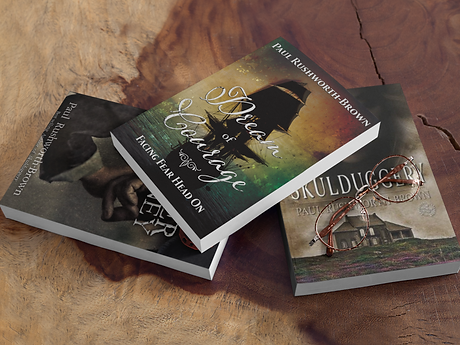In the hallowed halls of Victorian-era schools, the echoes of strict discipline and unwavering religious morals resounded, shaping the lives of children in ways difficult to imagine today. In this exploration of a bygone era, we delve into the world of education, where teachers' stern hand and divine reminders painted a complex picture of childhood. Join us on a journey through the challenges faced by these impoverished youngsters and witness Victorian schooling and the resilience of underprivileged Children.

Teachers held a formidable reputation for maintaining order through corporal punishment, a practice that left both physical and emotional scars. Daily prayers and hymns, essential elements of the school routine, served as perpetual reminders of God's watchful presence. This strict adherence to religious morals seeped into every facet of Victorian life, from the classroom to children's literature.
Children's literature of the era was a reflection of this emphasis on morality, featuring tales that celebrated virtuous behaviour and sternly punished the mischievous. These stories were vehicles for instilling values such as honesty, obedience, and charity, all in line with prevailing Christian beliefs. For the Victorians, adherence to these moral codes was deemed paramount for leading a 'good Christian life.'
In stark contrast to the modern perception of education as a fundamental right, Victorian children from impoverished backgrounds faced a different reality. Many had to forgo school attendance and contribute to their family's income from a young age, as they were expected to join the workforce as early as six. The Industrial Revolution's lure of better job opportunities drew families to overcrowded urban areas, where challenges such as diseases and crime loomed large.

Amid these challenges, some enlightened Victorians recognised the importance of educating underprivileged children. Education was viewed as a vital tool to steer children away from lives entangled with crime by instilling Christian values. The early attempts to educate the poor took shape through charity schools and Sunday schools, which not only imparted reading skills but also provided essential necessities like food and clothing.
In 1880, a pivotal moment occurred with the passage of laws mandating school attendance for all children aged 5 to 10. However, this milestone was not without its challenges, as many parents, already struggling to provide for large families, found the additional cost of schooling burdensome. Tensions sometimes flared, resulting in confrontations between frustrated parents and teachers.

Victorian classrooms were demanding environments, where the pursuit of knowledge exacted a high price. Boys and girls followed separate educational tracks, with girls focusing on homemaking skills and boys on woodwork. The pressure to excel was constant, and annual inspections subjected pupils to rigorous testing, failure often leading to repeating an entire year's work. The classrooms themselves were austere, emphasizing hard work and little room for enjoyment.
In the lives of Victorian children, the weight of strong religious beliefs was palpable. A "good Christian life" meant adhering to virtues such as honesty, obedience, charity, and kindness. Regular church attendance and acts of charity were fundamental, and loyalty to authority figures and Queen Victoria formed the core of a virtuous existence.
Within Victorian society, strict moral codes sharply distinguished the "polite society" from the perceived "lawless poor." People were expected to adhere to these codes, know their place, and refrain from questioning authority. Unfortunately, for the less fortunate, children were often seen as burdens, lacking legal protection and exposed to neglect, abuse, and even being bought and sold as property by their parents.
Schools reinforced strict discipline through physical punishment, serving as a reminder of God's ever-watchful presence through daily prayers and hymns. The literature of the era was rife with morality tales, celebrating good's triumph over evil and underscoring the importance of living a respectable, Christian life.
This deep moralistic perspective extended to the Victorian views on crime and punishment, ultimately leading to the creation of a new police force, known as "Bobbies" or "Peelers." The rigid social structure and moral codes of the era held obedience to authority figures in high regard.
As we venture beyond the classrooms, we uncover a contrasting narrative of impoverished children enduring unimaginable hardships. Their modest dwellings were often small, cold, and damp, plagued by lice and vermin. Clean water was a precious commodity, and stoves were a luxury they could scarcely afford. These challenging living conditions were further compounded by , rampant diseases, and the ever-present specter of crime.

Despite these dire circumstances, the street itself became the playground for these resourceful children, who made the most of their challenging environment. In a society where the blame often fell on the poor for their own plight, the destitute were ostracized, with the workhouse as their last resort, resembling a prison enforcing stringent regulations and grueling labor.
Over time, attitudes began to shift as charitable organizations and social reformers stepped in. Homes, schools, and orphanages were established for children in need, offering sanctuary, sustenance, cleanliness, and the opportunity to learn to read and write. Though only a fortunate few could access these services, they represented a glimmer of hope in an otherwise harsh world.
The destitute children of the 19th century faced hardships beyond our modern comprehension, serving as a testament to the resilience of the human spirit. Their journey from adversity to eventual triumph reflects the enduring power of empathy and the unwavering human capacity for resilience.
The Victorian era's educational landscape was one of stark contrasts and unrelenting challenges for underprivileged children. Yet, it was also a time when compassion and social reform began to shape a more equitable future. The struggles faced by these Victorian youths are a poignant reminder of how far society has come in providing equal educational opportunities for all.

Paul Rushworth-Brown is the author of three published novels

He was born in Maidstone, Kent, England in 1962. He spent time in a foster home in Manchester before emigrating to Canada with his mother in 1972. He spent his teenage years living and attending school in Toronto, Ontario, where he played professional soccer in the Canadian National Soccer League. In 1982, he emigrated to Australia to spend time with his father, Jimmy Brown who had moved there from Yorkshire in the mid-fifties.
Paul was educated at Charles Sturt University in New South Wales, Australia. He became a writer in 2015 when he embarked on a six-month project to produce a written family history for his children, Rachael, Christopher and Hayley.

Skulduggery - In the gripping historical novel "Skulduggery," a reclusive family of copyholders guards their secrets amidst the isolation of their village. But when a brutal attack shakes their world, they find themselves teetering on the precipice of danger.
Set against the turbulent backdrop of the English Reformation, this masterfully crafted tale breathes life into a tapestry of unforgettable characters, both heroes and villains, all entangled in a meticulously realized historical mystery.
As the story unfolds, you'll be transported to an era so vividly depicted that it feels both utterly believable and astonishingly surreal. Prepare for twists and turns that will leave you gasping in surprise, and an ending so unexpected, even the most astute readers will be left in awe.
"Skulduggery" is a mesmerizing journey through a slice of history where deception runs deep, redemption beckons, and every secret holds the power to change lives forever. Prepare to be captivated by a tale that will keep you guessing until the very last page.

In the tumultuous year of 1642, England is plunged into the throes of a brutal civil war, tearing families and communities apart as they pledge their allegiance to either the King or Parliament. Amidst this chaos, "Red Winter Journey" emerges as a sweeping saga, a timeless odyssey of adventure and heartbreak, sacrifice and unyielding love.
At its core, this unforgettable tale beats with the resolute heart of a mother's boundless love for her son, a love that will be tested to its very limits. As the war unfolds, their historic journey takes them on a rollercoaster of twists and turns, punctuated by a fiery passion that defies the ravages of time.
"Red Winter Journey" is a mesmerizing voyage through a divided land, where the bonds of love and loyalty are both the source of strength and the crucible of their trials. Prepare to be swept away by a story that will leave your heart pounding and your soul forever touched by the enduring power of human connection.

Dream of Courage: Facing Fear Head On
Step into a mesmerizing historical fiction thriller that will sweep you away on a pulse-pounding journey through time.
Meet the indomitable Rushworths, impoverished tenants bound to the stern Puritan, Jasper Calamy, within the forbidding walls of Haworth Manor. Theirs is a life of toil, tending sheep and weaving wool from meager scraps, remnants of a world that passes them by.
But when the audacious brothers, Robert and John Rushworth, embark on a daring quest to find their fortune amidst the bustling chaos of The Briggate in Leeds, they unwittingly trigger an extraordinary adventure. Hunted relentlessly by John Wilding, a brutish brogger with no regard for decorum, they must outsmart the very essence of the 'lower sort' that threatens to ensnare them.
In the shadowy recesses of a local tavern, mysteries simmer, and secrets abound. Here, Smythe, a enigmatic figure with a concealed past, thrusts Robert into the treacherous domain of The Haven. It is here that he crosses paths with Captain Girlington of 'The Pearl,' who holds the key to his destiny.
As danger closes in, will Robert elude its suffocating grasp, or will the ominous hangman's noose tighten its deadly hold? Amidst the lurking shadows, can he find a way to unite with his heart's desire, the enchanting Ursula, in a world where passion and peril intertwine?
"Dream of Courage: Facing Fear Head On" is an electrifying historical thriller that propels you across the ages, where courage is the priceless currency of survival, and love serves as the guiding light through the darkest of times. Brace yourself to confront fear head-on and embark on an unforgettable odyssey where destiny hangs in the balance.





.png)

.png)

.png)
.png)



.png)




Commentaires